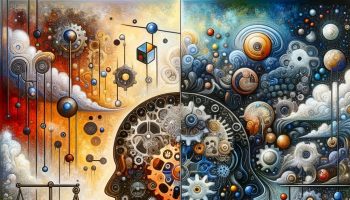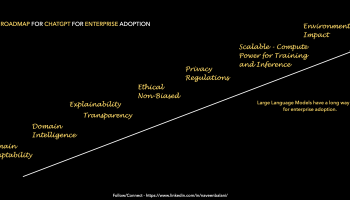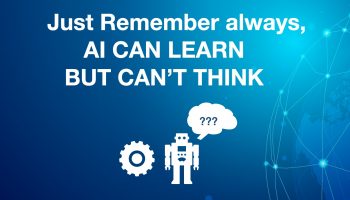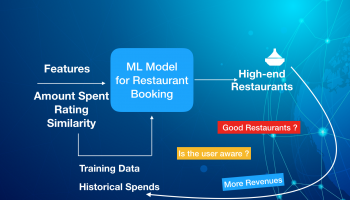Since time immemorial, the human race has been fascinated with what machines could or couldn’t do. The quest for creating intelligence that can surpass human intelligence continues to grow and its coined in a term called “Artificial Intelligence (AI)”.
The term AI though was coined by Mr John McCarthy in 1955, the computer visionary who I am sure would have been glad that his Shakespearean display caught the eye of the researchers around the world as it ranked 4th in the Scopus scholarly database. It’s even fascinating to know that it didn’t appear in the top 10 searches the year before. A spectacular performance. One could relate it to a New blockbuster film opening weekend where it overtakes fading glories. But in the case of AI, it would be fair to say it’s a sequel story. The sequel story is only behind cancer for obvious reasons. (As most researchers/scientist belong to the medical discipline and the cure to cancer remains the last undiscovered El dorado in the field). The other 2 words in the list are two rather newly coined terms Blockchain and Big Data. No surprises here if you are following the technology trends, as all the 3 are linked to AI in some way or another, with a potential to create intelligent and trusted systems in future.
AI is the latest marketing buzzword that is made to find its place in every possible use case – from driverless cars to intelligent chatbots, from robots like Sophia to solving cancer problems, from winning games to providing human like intelligence. But is this current hype real or we have just started scratching the surface of intelligence.
In order to make the distinction on hype v/s reality, let’s go in some basic technical details of AI technology.
AI stands for artificial intelligence. Its an intelligence system put together artificially to learn and provide an output. Learning can be done by providing data to the AI system. Data can be big data, customer data, unstructured text, audio, visuals, environment surrounding details etc. Based on the data provided, an AI system would learn and identify hidden patterns and provide an output.
For instance, if an AI is recommending what food to order, it must know your food preferences, what you had ordered before, where do you usually order from, what days you usually order specific cuisine and lot of other details to recommend the right cuisine for you. The output can be a list of Top 5 food orders for today.
Similarly if an AI is assisting a doctor for providing options for cancer treatment, the system must have the complete patient medical history, must understand the the complete cancer domain (or the respective specialisation) and also periodically learn any new treatments or findings from medical journals. Understanding the complete cancer domain is a every complex process, where one needs to train the system to understand the medical terminology and the vast ever growing cancer literature, identify patterns and correlations from existing patients, their suggestive treatments and outcome and finally suggest options for treatment. There can be many more data points and this is a continuous process where system would be trained from the feedback and their outcome. While we keep hearing AI is helping solve cancer cases, this is far from reality and systems have just started to touch the surface.
To make life simpler, just remember the following distinction –
“AI can learn, but can’t think“.
Thinking would always be left to Human on how to use the output of an AI system. AI systems and their knowledge would always be boxed to what it has learned, but can never be generalised (like humans) to think outside the domain it has been trained on. Understanding this distinction is very important. Human intelligence with only few set of observations can learn, think and apply their learnings on different domains quite easily. A simple example would be of a doctor treating cancer patients can give you advice for common cold, but an AI system trained specifically on cancer data, may not even understand what common cold means, leave aside the treatment options. Building a generalised AI system may or may not happen in future. The current focus should be building domain specific intelligence and get it right.
AI can never be a replacement for Human Intelligence. While simple to medium outputs of AI can be automated to skip an Human expert, the majority of the decision making and critical intelligence would always needs Human intelligence.
While AI is been projected as the next big technology that can transform our world, we are far from away in releasing this vision. You may hear many successful AI marketing strategies, but AI is yet to deliver its true value. AI alone will not lead to transformation, but a combinatorial power of various technologies and advancements in computing power would bring it closer to its true potential.
Through this book, I plan to provide a realistic view on what AI system can achieve in today’s environment and what to expect in future. I plan to draw the reality and bring you closer to Real-AI. Hence, the book is titled – “Real AI”.
After going through several iterations on the format of the book, I started writing this book in a Question and Answer format as it provides direct answers to some of the questions the readers would want to know. The book is being written and freely available on my website – http://navveenbalani.com/index.php/books/download-real-ai-a-definitive-handbook/. The book will cover the following topics –
- AI Introduction – Real facts minus the hype.
- AI chatbots – The not so intelligent chatbots.
- Recommenders – The race towards personalised recommendations
- Predictions – The illusion of AI surpassing human intelligence
- Computational Creativity – An AI that can paint, sing or dance
- What’s in future – More buzzwords to keep you busy – The Ethical AI, Explainable AI, Auditable AI and the list would go on..
One chapter of the book (AI chatbots – The not so intelligent chatbots.) is available now.
The Real AI book is part of our “The Definitive handbook” series. Our vision in the – “The Definitive handbook” series is to enable our readers to understand the technology in simple terms and provide a practical go-to reference and a recipe for building any real-world application using the latest technology.
If you have any questions and comments on the book, please write to me at me@navveenbalani.com. You can purchase the book from Amazon at – https://amzn.to/2WqLa7h (all royalty would go to charity) or download the free copy from http://navveenbalani.com/wp-content/uploads/2019/04/REAL-AI-BOOK-NB.pdf





